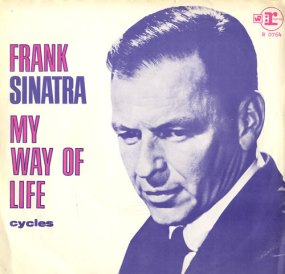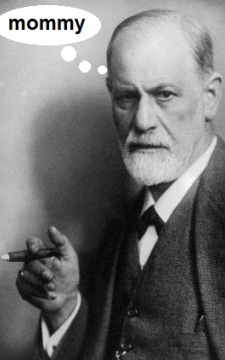
Pleasure-seeking and relationships are the two most powerful forces informing societies, families and the inner life of individuals – and they are often pitted against each other, with one dominating at the expense of the other.
Pleasure-seeking as a philosophical enterprise has been around since at least the ancient Greek philosopher Epicurus, and was more fully elaborated in the writings of Sigmund Freud whose “pleasure principle” lays at the base of all psychoanalytic theory; “What decides the purpose of life,” writes Freud, “is simply the programme of the pleasure principle.”1
For Freud the human libido is a pleasure seeking force, and his popularization of this idea gave the project of global capitalism part of its internal rationale: every individual is an appetite ruthlessly seeking pleasure, a non-stop consumer. The majority of societies and economies around the world are now reliant on this principle in order to perpetuate themselves.
According to Freud, the pleasure principle is:
– backed by instinctual drive
– selfish
– ruthless
– narcissistic
– focused on the individual above relationships
After 100 years of promoting the importance of the pleasure principle, indeed over-promoting it, today we have become devotees at its shrine, promoting ideas like these:
– narcissism
– sense of entitlement
– pick up artistry
– rampant consumerism
– commodification of interpersonal relationships
How are we feeling about all that pleasure – are we enjoying it yet or are we sick of it? Do you want to dial up the hedonism some more, or do you want to join me in questioning the premise?
Despite capitalism’s incestuous relationship with the pleasure-principle, a behavior it does more to perpetuate than merely serve, early psychoanalysts began to see problems with it. The problem was not with the idea that humans are pleasure seekers, but that the idea had been afforded far more importance in human behavior than it deserved – there were other more important factors to human being that had been given short shrift.
Like relationships.
Early psychoanalyst Ronald Fairbairn was amongst the first to write about the importance of relationships over pleasure seeking. In 1944 Fairbairn explained the impasse with Freud’s theory as follows;
In a previous paper (1941) I attempted to formulate a new version of the libido theory and to outline the general features which a systematic psychopathology based upon this re-formulation would appear to assume. The basic conception which I advanced on that occasion, and to which I still adhere, is to the effect that libido is primarily object-seeking (rather than pleasure-seeking, as in the classic theory), and that it is to disturbances in the object-relationships of the developing ego that we must look for the ultimate origin of all psychopathological conditions. This conception seems to me not only to be closer in accord with psychological facts and clinical data than that embodied in Freud’s original libido theory, but also to represent a logical outcome of the present stage of psychoanalytical thought and a necessary step in the further development of psychoanalytical theory… 2
This revolution in psychoanalytic thinking launched the school of Object Relations psychology, with the word ‘Object’ standing for real people we enter into relationships with. Object Relations psychology is based more on attachment theory than on the pleasure principle. In a nutshell this school, which superseded psychoanalysis, is described as:
Object relations is based on the theory that the primary motivational factors in one’s life are based on human relationships, rather than sexual or aggressive triggers. Object relations is a variation of psychoanalytic theory and diverges from Freud’s belief that we are pleasure seeking beings; instead it suggests that humans seek relationships.3
Has the mental health industry caught up? Yes, I’m pleased to say that portions of the industry have not only caught up, they are driving the research on attachment forward. Other sections of the industry, however, especially those on the front line of offering services, continue to devote undue importance to pleasure-seeking through the advocacy of self-actualization and ‘me and my wants.’
The problems of gynocentrism and treating of men as utilities will not be addressed until we look at how these things are used to generate pleasure. One reason we have stalled in relativizing the pleasure-principle and affirming the findings of attachment science, is that it’s obviously not in the current society’s interest to do so. To catch up and look in the mirror is to die – the whole goddam system collapses – our beliefs, our customs, our financial systems.
But look at it we must, both collectively and individually if we wish to promote mental health.
Do we really need more shopping, drugs, stimulation, sex and food? Frankly many men are done… they’ve had enough food and sex to last 20 lifetimes. They don’t need more pick-up techniques, they don’t need more research fads focusing on sexual drives a-la-Freud, and they certainly don’t need to consume more – they’ve consumed quite enough, thank you.
If we insist on believing the pleasure principle is paramount, that it is our most pressing genetic imperative, along with the belief that “all men want is sex” that so many men find annoying, then our only escape is to follow a sick, nihilistic version of retreat from the world. How else to escape the call of pleasure? Our western culture’s devotion to the pleasure principle leaves it stuck in its own insoluble loop, like a snake devouring itself and not realizing that the tail it is eating is its own.
I say western culture because there are whispers of an alternative in other cultures that, alas are also being corrupted for the newfangled focus on the pleasure principle that drives the mighty dollar. I have listened to people from various Asian countries – Cambodia, China, Thailand – who talk of valuing their relationships and families somewhat more than their own pleasure-seeking ambitions. Watch how they eat together, having several dishes of food on the table that they all share, not everyman for his own narcissistic pleasure. I have also heard some Asians ask, perplexed, why women wear skimpy clothes in winter, not knowing that our cultures are all about inviting consumption and commodification of every person in order to feed each others’ predatory pleasures.
None of this is to deny the pleasure principle and its powerful pull on men’s lives. But pleasure quickly becomes hedonism without relationship to temper it, and it leads not to a meaningful life but to emptiness and nihilism where ‘opting out’ is the only alternative response – a response that looks more like a sickness than a cure.
Now what does all this mean to the wellbeing of men? In short, everything. Getting these two vital aspects of human nature in balance is not only the secret to psychological health, but our lives may literally depend on it. Regaining that balance can start with paying more attention to our relationship needs and less to pleasure – more to the girl-next-door and less to the girl with the exaggerated cleavage, boob jobs, and love bombs.
Moreover, the problem does not stop at intimate adult relations, and applies to family as well. If every family member is chasing his or her own pleasures, they are more likely than ever to spin off in their own directions like atoms rapping in a void – there’s no glue holding the unit together, no relationship – and custody battles, selfishness and estrangement are the inevitable result: Me and my pleasures first.
To be sure, regular relationships also afford experiences of pleasure or contentment, albeit of lower intensity than the pleasure-seeking described by Freud. Another distinguishing feature is that relationships don’t involve the use of people in the same ruthless manner as does the pleasure principle – ie. not the same as we experience when devouring food or having sex. Relationship is more concerned with situating oneself in a context and gaining emotional satisfactions from that – from belonging, from being-with-others, as contrasted with using objects to satisfy appetite. A second distinguishing feature of intimate relationships is that the individual has concern for the objects of his attachment – whereas the pleasure-seeking appetite has no concern over its use of people nor its destruction of same.
Jungian analyst Robert A. Johnson writes about the two impulses as two kinds of “love.” He calls the pleasure-seeking impulse romantic love, and the relationship-seeking version human love. Here is his description of the two;
Many years ago a wise friend gave me a name for human love. She called it “stirring-the-oatmeal” love. She was right: Within this phrase, if we will humble ourselves enough to look, is the very essence of what human love is, and it shows us the principal differences between human love and romance. Stirring the oatmeal is a humble act-not exciting or thrilling. But it symbolizes a relatedness that brings love down to earth. It represents a willingness to share ordinary human life, to find meaning in the simple, unromantic tasks: earning a living, living within a budget, putting out the garbage, feeding the baby in the middle of the night. To “stir the oatmeal” means to find the relatedness, the value, even the beauty, in simple and ordinary things, not to eternally demand a cosmic drama, an entertainment, or an extraordinary intensity in everything. Like the rice hulling of the Zen monks, the spinning wheel of Gandhi, the tent making of Saint Paul, it represents the discovery of the sacred in the midst of the humble and ordinary.
Jung once said that feeling is a matter of the small. And in human love, we can see that it is true. The real relatedness between two people is experienced in the small tasks they do together: the quiet conversation when the day’s upheavals are at rest, the soft word of understanding, the daily companionship, the encouragement offered in a difficult moment, the small gift when least expected, the spontaneous gesture of love. When a couple are genuinely related to each other, they are willing to enter into the whole spectrum of human life together. They transform even the unexciting, difficult, and mundane things into a joyful and fulfilling component of life. By contrast, romantic love can only last so long as a couple are “high” on one another, so long as the money lasts and the entertainments are exciting. “Stirring the oatmeal” means that two people take their love off the airy level of exciting fantasy and convert it into earthy, practical immediacy. Love is content to do many things that ego is bored with. Love is willing to work with the other person’s moods and unreasonableness.
Love is willing to fix breakfast and balance the checkbook. Love is willing to do these “oatmeal” things of life because it is related to a person, not a projection. Human love sees another person as an individual and makes an individualized relationship to him or her.4
I attempted to outline the importance of relational attachments in a past article Sex and Attachment and another sketching a way to build relationships that avoid some of the predatory themes at the heart of Western gynocentrism, entitled Love and friendship. Hopefully these provide some discussion points, but more important is asking of the initial question: are we ready to interrogate the pleasure-principle as the foundation of our society?
References:
[1] Sigmund Freud, Civilization, Society and Religion (PFL 12) p. 263 (1991)
[2] Ronald Fairbairn, Psychoanalytic Studies of the Personality pp. 82-83 (1952)
[3] Object Relations, definition from GoodTherapy.org (August 2015)
[4] Robert A. Johnson, We: Understanding the Psychology of Romantic Love, p. 195 (1983)




